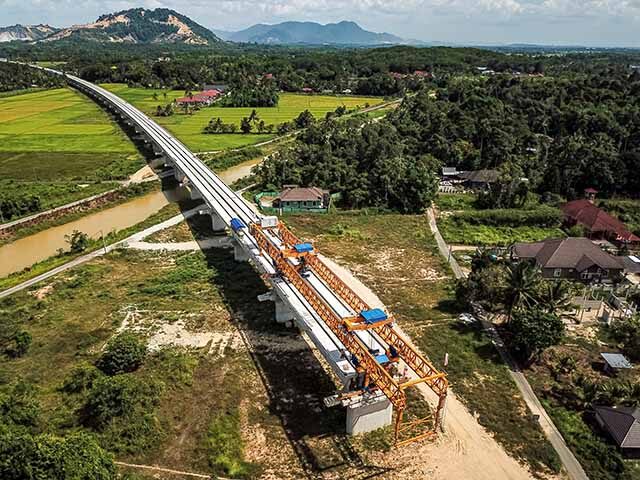The Lowy Institute of Australia published a report on Wednesday that found China’s funding for its Belt and Road Initiative (BRI) projects in Southeast Asia is about $50 billion short of its commitments, apparently due to a variety of causes, from political instability in BRI countries to reduced demand for fossil fuel projects.
The Lowy Institute looked at 34 megaprojects across Southeast Asia, 24 of them funded by China. China’s projects were only about 33 percent complete overall. Five of them, worth about $21 billion in total, have been canceled outright, while another three projects valued at $5 billion will likely be abandoned.
Overall, China’s $77 billion in projects were underfunded by some $52 billion, a rather massive shortfall that some analysts attributed to the deteriorating Chinese economy. The Lowy Institute cited other causes, including various problems in the BRI client countries, and said it would be “misplaced” to assume Belt and Road is doomed because China can no longer afford it.
Instead, the report pointed to political difficulties and unrest in client states like Malaysia, Thailand, and parts of the Philippines as reasons why some BRI projects are moving much more slowly than anticipated.
The authors criticized China for “a history of poor engagement with local stakeholders,” a rather delicate reference to China’s habit of sending its own managers, engineers, and skilled workers to complete projects instead of creating local jobs and hiring from its client states.
“China has often been criticized for its top-down approach, limited transparency, and inadequate consultation processes. Failure to engage effectively with local communities and address their concerns regarding environmental impacts, social displacement, and cultural preservation leads to resistance and project delays,” the Lowy Institute noted.
Some BRI client states would be difficult to deal with even if China was not so heavy-handed about managing its projects. Some of those states are now controlled by very different governments than the ones that signed big infrastructure deals with Beijing, such as Myanmar, which fell to a coup in 2021.
In another case cited by the Lowy Institute, China signed railroad deals with the Philippines during times of relatively good relations under President Rodrigo Duterte, but the Communist Party is now at odds with the administration of President Ferdinand Marcos, Jr. The Marcos administration has canceled two BRI rail projects worth almost $4 billion.
The Lowy Institute found that other BRI projects have been stalled or canceled by the “rising imperative to accelerate the clean energy transition.”
China, in short, littered the developing world with dirty coal-fired power plants, but some of its client states have grown reluctant to complete coal power projects. This reluctance increased after Chinese dictator Xi Jinping made a public commitment to stop building coal plants in late 2021.
Although its report was generally bad news for BRI, the Lowy Institute was guardedly optimistic about the survival of China’s gigantic infrastructure program, even if only 33 percent or 35 percent of the projects are ultimately completed.
“With an eye to the future, it becomes clear that by virtue of the scale of China’s ambition, even a partially unfulfilled Chinese development program would provide more than that of any other international partner involved in Southeast Asia,” the report said.
“In a scenario where China learns from its mistakes and addresses technical challenges, political instabilities, and stakeholder engagement issues, Beijing could fulfill all its infrastructure commitments in Southeast Asia, excluding those already canceled. Beijing’s disbursements would then reach a staggering $62 billion in coming years, surpassing by far that of any other development partner, under the same assumption of full implementation of existing project commitments,” the authors noted.
The Council on Foreign Relations (CFR) was a bit more pessimistic in its February analysis of BRI, pointing out that the double blow of the coronavirus pandemic and Russia’s invasion of Ukraine caused more debt defaults among BRI clients than China was ready for, or can comfortably absorb.
“In Pakistan, for example, imports required to build CPEC infrastructure contributed to a widening budget deficit, ultimately resulting in a bailout from the International Monetary Fund (IMF). And in Ghana and Zambia, high debt loads that partly consisted of BRI loans led to sovereign default,” the analysis noted.
CFR also thought China’s promise to stop building coal plants under BRI would prove very difficult to keep, since coal power accounted for almost half of Belt and Road spending, and the overall infrastructure plan assumes much higher power generation in developing client states than most of them can produce affordably without coal.

COMMENTS
Please let us know if you're having issues with commenting.